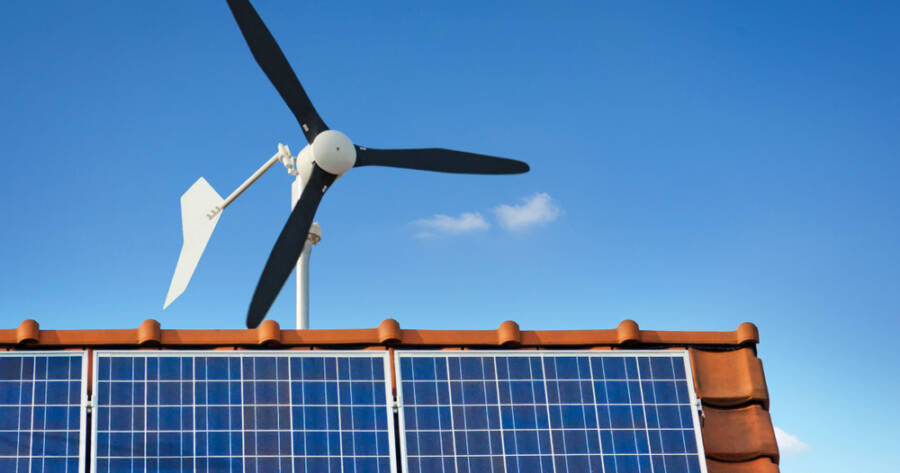As renewable energy continues to shape the future, homeowners are exploring new ways to reduce their carbon footprint and lower energy costs. Among the various options available, home wind turbines have emerged as a compelling choice. These small-scale wind energy systems provide a unique way to harness the power of nature. This article delves into the factors driving the popularity of home wind turbines, their benefits, challenges, and whether they could be a viable option for your energy needs.
Growing Awareness of Renewable Energy
The global shift toward renewable energy has been fueled by growing concerns about climate change and the rising cost of traditional energy sources. Wind power, in particular, is gaining attention due to its proven effectiveness in large-scale applications. Home wind turbines allow individuals to tap into this reliable source of energy on a smaller scale, offering a personal contribution to sustainability efforts.
While solar power has traditionally dominated the renewable energy conversation, wind turbines are carving out their niche. They offer an alternative or complementary solution, especially in areas with consistent wind patterns. As more homeowners prioritize energy independence and environmental stewardship, wind turbines present a promising solution worth considering.
Cost Savings and Energy Independence
One of the most attractive aspects of home wind turbines is their potential to reduce electricity bills. By generating your own electricity, you can offset energy costs and, in some cases, even sell excess power back to the grid through net metering programs. However, it’s essential to approach these benefits with realistic expectations. The actual savings will depend on factors such as wind availability, turbine efficiency, and local electricity rates.
Beyond cost savings, wind turbines can provide a sense of energy independence. For those living in remote areas or places prone to power outages, these systems offer a reliable backup source of energy. Even if wind conditions are not constant, a hybrid system combining wind and solar power can create a more resilient energy setup.
Technological Advancements
Technological innovation has played a significant role in making home wind turbines more accessible and efficient. Modern turbines are quieter, more compact, and better suited to residential settings than earlier models. Innovations in blade design and materials have improved performance, enabling turbines to generate power even at lower wind speeds.
In addition, smart technology integration allows homeowners to monitor their energy production in real-time. These systems can help optimize performance and provide insights into energy consumption patterns, making it easier to understand and maximize the benefits of wind energy.
Environmental Impact
Home wind turbines align with the broader goal of reducing greenhouse gas emissions. By generating electricity without relying on fossil fuels, they help decrease the demand for non-renewable resources.
While the environmental benefits are significant, it’s worth noting that the production and disposal of turbines have their own ecological footprints. However, advancements in recycling and sustainable manufacturing practices are helping to address these concerns.
Challenges and Considerations
Despite their advantages, home wind turbines are not without challenges. One of the primary barriers is the upfront cost, which can range from a few thousand to tens of thousands of dollars, depending on the system size and installation requirements. Additionally, the feasibility of a wind turbine depends heavily on local wind conditions. Areas with inconsistent or low wind speeds may struggle to generate sufficient energy, making the investment less practical.
Another consideration is zoning regulations and neighborhood aesthetics. Some areas have restrictions on turbine height or noise levels, which could limit your options. It’s essential to research local regulations and consult with neighbors before moving forward.
Lastly, maintenance is a critical factor. While modern turbines are designed for durability, they require regular inspections to ensure optimal performance. Components such as blades and bearings may need occasional repair or replacement, adding to the long-term costs.
Is a Home Wind Turbine Right for You?
Deciding whether to install a home wind turbine involves weighing various factors, including your location, budget, and energy goals. Conducting a thorough site assessment is crucial to determine if wind conditions are favorable. Professional consultations can help you evaluate the potential return on investment and identify the most suitable system for your needs.
It’s also worth exploring incentives and rebates offered by governments or utility companies. These programs can significantly reduce the upfront cost and make wind energy more accessible to homeowners.
Learn More Today!
The rising popularity of home wind turbines reflects a growing interest in sustainable living and renewable energy solutions. While these systems offer numerous benefits, including potential cost savings and reduced environmental impact, they’re not a one-size-fits-all solution.
Careful consideration of factors like wind availability, local regulations, and long-term maintenance is essential to determine if a wind turbine is the right choice for your home. By exploring this innovative energy option, you can take a step toward greater energy independence and a greener future.
